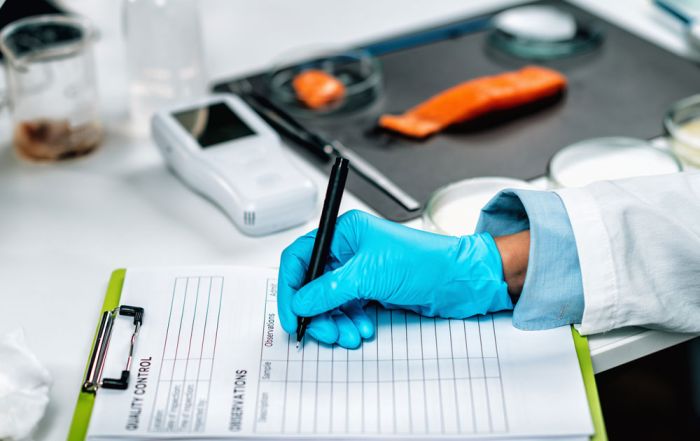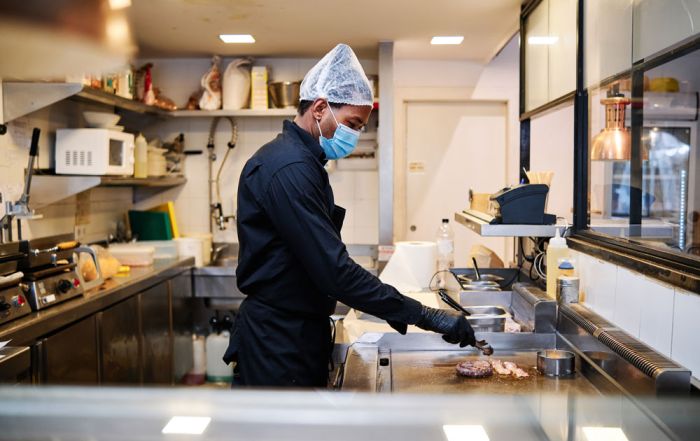Keep Ready-to-Eat Foods Safe
In our first blog for February, we identified some of the risks with ready-to-eat foods. RTE does not mean risk free! We pointed out that food processors have implemented food safety plans that use good manufacturing and good handling practices (GMPs and GHPs). Foodservices often purchase RTE foods to avoid some risk in-house. In fact, many schools do not purchase raw protein foods because of risks from under cooking and cross-contamination. But there are still risks from temperature abuse due to improper holding and from contamination that occurs intentionally, or unintentionally, from employee practices or unclean equipment.
So, what prevention steps can be taken? Avoiding temperature abuse means having calibrated temperature measuring devices readily available and staff knowing how to use these. It means knowing which foods need to be kept out of the temperature danger zone (remember that is between 41°and 135°F) as well as recognizing end-point cooking temperatures for the specific food item, and keeping hot foods hot and cold foods cold.
Defending the safety of food means it being stored in secure locations or closely monitored. Using the “see something, say something” approach prevents unauthorized people from causing harm. Controlling access to food storage and production areas to employees and having staff in public service areas monitoring the action and being a presence can reduce risks. So, if you have a self-serve food bar, schedule employees to be out front. The bonus is they can keep the area clean and replenish supplies, and provide a visible presence.
Avoiding unintentional contamination means storing the food correctly to keep it safe. Staff who are in good health following good hygiene practices and who don’t directly touch the food with their bare hands is key to risk prevention. FoodHandler has several good videos on these topics for staff. The current Model Food Code, released in 2017, states that food handlers should not touch ready-to-eat foods with their bare hands and that suitable utensils such as deli tissue, spatulas, tongs, single-use gloves, or dispensing equipment should be used. Use of these tools provides a barrier between hands and the food, thereby minimizing some of the risk.
Gloves are an easy to use solution to providing this barrier. In fact research has found that customer perceptions improved if gloves were worn by food workers. Risk nothing!
Making sure utensils and surfaces in contact with the RTE food are clean and sanitized, and haven’t been re-contaminated by dirty hands reduces risk of pathogen transfer.
Food safety fundamentals of temperature controls, good employee practices, and a rigorous cleaning and sanitation program are key to keeping food safe. RTE foods reduce some risks, but not all. Since we are in basketball season, we will use the adage of “the best defense is a good offense” and add, “particularly for ready-to-eat foods”.
As we say at FoodHandler, Risk Nothing!
READ MORE POSTS
Hot off the Press: The 2022 Model Food Code has been Released! Part One.
It has finally arrived! Yes, the new year has arrived – but I was not referring to it. I was referring to the new 2022 Model Food Code (10th edition) that has been released by the Food and Drug Administration. I thought I might take this blog and the next blog to discuss some of the changes that have been made to the Food Code that you might see coming your way in the next few years.
Is a Food Safety Culture on your New Year’s Resolutions List?
We hope you all had a wonderful Holiday season and are getting ready for a great new year!
Don’t Underestimate the Importance of Employee Health as we head into the Winter Months
Early this month, I ran across an article discussing an outbreak investigation in the Australian Capital Territory. The outbreak caused more than 200 people to fall ill and was one of the most widespread outbreak investigations in the history of the territory. The cause was traced back to Norovirus, a virus I am sure you have heard us opine about in this blog before.
Exclusion and Restrictions: Understanding Employee Health and the Food Code
I received a call earlier in the month from a foodservice operator who suspected that one of their employees may have fallen ill and wondered if they had to send the employee home for the day. Once I started to ask a few more questions, it became obvious that the operator wasn’t really in-tune with the food code requirements on restrictions or exclusions for employees who may not be feeling well. Given that most operations are dealing with staff shortages currently and the fact that we are about to head into the fall and winter – when we tend to see an increase in upper respiratory and other illnesses, such as the flu - it seemed like a very timely and important topic for the blog this month.










